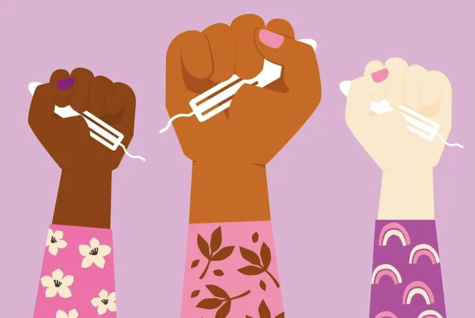What is Period Poverty
May 17, 2023
Imagine a society in which many women lack a basic amenity because they are unable to afford to buy something that is essential to their health.
Many people may attest to this truth. One in ten menstruation youth leave school during their period, according to a 2014 research by the United Nations Educational, Scientific and Cultural Organization, since there aren’t enough menstrual products and resources available. And many young people who are menstruating are inclined to use paper, old garments, rags, etc. in various regions of the world, including sub-Saharan Africa. Utilizing questionable materials like leaves or worn-out clothing might result in serious health issues like urogenital and reproductive tract infections. Additionally, many schools in developing countries lack enough privacy protections and have dirty water, which makes it difficult for students to safely manage their menstrual cycles.
Additionally, American period poverty is still a problem today. Many students who depend on the menstrual products their school gives turned to alternative methods, like using toilet paper as a replacement, during the 2020 global pandemic. In a nationwide poll of 1,000 menstruation teenagers, 1 in 5 reported financial difficulties in accessing period products, and 4 in 5 reported either missing class or knowing someone who did so. Unfortunately, government programs like the Special Supplemental Nutrition Program for Women, Infants, and Children, also known as WIC, and the Supplemental Nutrition Assistance Program, popularly known as SNAP, do not provide funding to pay the cost of these essential goods.
So, how can we, as students, can help with this persisting issue?
We can help and combat these issue by:
- Choosing menstruation brands that help and support ending period poverty such as Biniti Period, Freedom4Girls, Cora, Days for Girls, andn Lunapads.
- Donating to organizations like PERIOD and Helping Women Period that work to eradicate period poverty on a local or worldwide scale.
- And finally, starting a conversation about period poverty. Many Americans are unaware of the widespread issue of period poverty and how it impacts their local communities.
Check out these wonderful organizations and learn about how they combat period poverty:
- PERIOD: https://www.period.org/
- Freedom4Girls: https://www.freedom4girls.co.uk/the-story-so-far
- Dignity Period: https://www.dignityperiod.org/about-us
Days for Girls: https://www.daysforgirls.org/dfg-pads/





